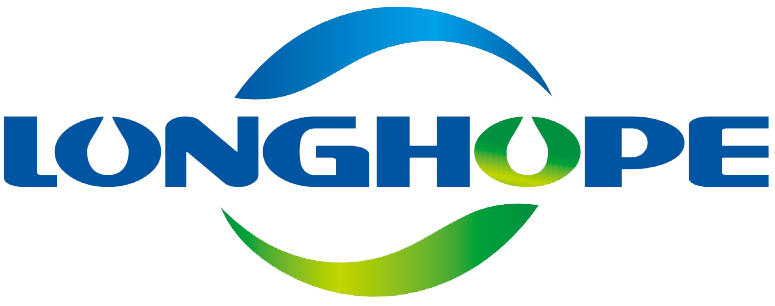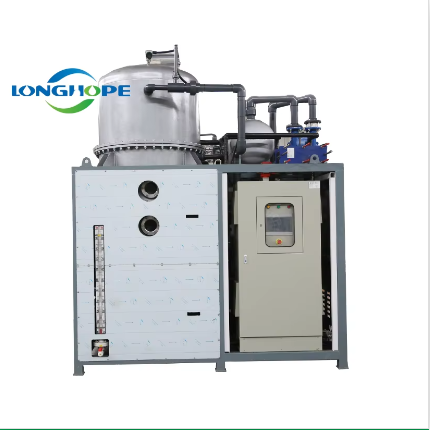How Industrial Vacuum Evaporators Enable Energy Savings
The Science Behind Vacuum Evaporation Technology
Vacuum evaporation works by changing how we control the environment to get better vapor results. When we drop the air pressure inside these systems, the boiling point drops too, which means liquids turn into vapor much quicker while using less energy overall. What happens here is pretty straightforward physics really. Liquid turns to vapor when there's less pressure around it, and this whole process actually transfers heat more efficiently than traditional approaches do. Industry data shows vacuum evaporation saves anywhere between 30-50% on energy costs compared to standard techniques. Lower boiling points cut down on both initial heating needs and ongoing maintenance demands during operation. For manufacturers looking at their bottom line, these efficiency gains make vacuum tech not just useful but practically necessary across many industrial settings where energy costs matter most.
Energy Recycling: Core Mechanism of Efficiency
Industrial vacuum evaporators recycle energy in ways that really boost how much energy gets used efficiently. Basically, these systems grab heat from steam and then reuse it to warm up new materials going into the process, which means less wasted energy overall. This kind of heat reuse cuts down on what gets thrown away while making the whole operation run better because it needs less power to keep running. Companies working with equipment like the VACUDEST system have seen real improvements in their bottom line thanks to this approach. Take the VACUDEST wastewater treatment setup for instance it hits around 95% efficiency when it comes to energy usage, showing just how effective these recycling methods can be. For manufacturers looking to save money and improve operations, implementing energy recycling isn't just smart business it's becoming essential for staying competitive in today's market.
Key Energy-Saving Mechanisms in Modern Systems
Reduced Boiling Temperatures and Energy Demand
Reducing boiling points in vacuum systems stands out as one of the best ways to save energy. When these systems run at lower pressures, they need far less heat to turn liquids into vapor compared to standard methods. The energy bill drops noticeably after implementing such systems. Industry reports show some facilities saw their energy needs drop by around 28% after switching to vacuum evaporation techniques. Look at any factory that's made the switch from conventional boilers to vacuum systems and the difference becomes clear pretty quickly. Traditional setups just can't match what vacuum technology achieves in terms of thermal efficiency when dealing with lower boiling temperatures.
Vapor Recompression Technology Explained
Vapor recompression stands out among energy saving technologies because it takes advantage of vapor that would otherwise go to waste during evaporation processes. What makes this approach so effective is that it cuts down on extra energy requirements, which means plants can run their operations at lower costs while still getting good results. Many industrial facilities actually use different forms of vapor recompression systems today. Some install mechanical versions where they compress the vapor directly, while others opt for thermal systems that work differently but achieve similar outcomes. Looking ahead, we're seeing more companies invest in these kinds of systems across various sectors. The reason? Sustainability goals are becoming non-negotiable for most businesses now, plus nobody wants to pay through the nose for electricity when there are smarter ways to manage resources.
Case Study: 95% Energy Efficiency in Practice
A real world example comes from a chemical processing plant that hit nearly 95% energy efficiency after installing industrial vacuum evaporators. The facility managers made several key adjustments including reworking their workflow patterns and integrating new control systems. They managed this impressive efficiency level mainly by getting better at recycling heat within the process while cutting down on wasted resources. Their vacuum tech actually lowers the temperature needed for liquids to boil, which means they can compress vapors more efficiently too. Energy bills before the upgrade were way up there compared to industry standards, so when they installed these systems, costs dropped dramatically overnight. Looking at the numbers collected over time shows just how much difference vacuum technology can make across different manufacturing sectors.
Industrial Applications Driving Sustainability
Wastewater Treatment and Resource Recovery
Vacuum evaporators have changed the game for wastewater treatment plants across many industries when it comes to getting back useful resources. These systems work on vacuum evaporation principles to pull out impurities from water so factories can get their hands on clean water again plus recover some pretty valuable stuff too. Beyond just meeting those tough environmental rules most companies face nowadays, they cut down on what needs to actually be thrown away which helps keep operations going green. Environmental groups report that facilities using vacuum evaporators typically see major drops in both waste volumes and overall resource consumption. For manufacturers looking at long term sustainability goals, this tech represents a real step forward in making production processes cleaner while still being economically viable.
Zero Liquid Discharge (ZLD) Systems Implementation
Zero Liquid Discharge, or ZLD for short, represents a pretty game-changing strategy when it comes to sustainable practices, with vacuum evaporators playing a major part in making this work. These ZLD systems basically stop any wastewater from being discharged at all. They do this by collecting everything that would normally go down the drain either as clean water ready for reuse or as solid material that can be disposed of properly. This cuts down on environmental harm quite substantially. Many different sectors have started adopting these systems already. The chemical industry especially has seen great results from implementing ZLD alongside vacuum evaporation tech. Some pharmaceutical companies too report better waste handling and actually save money while conserving resources. According to industry data from last year, facilities using ZLD show real improvements in their environmental footprint. Vacuum technology just keeps getting more important across various manufacturing operations these days.
Environmental and Economic Benefits
Carbon Footprint Reduction in Manufacturing
Vacuum evaporators used in industrial settings cut down on carbon emissions during manufacturing, making them a green alternative for factories trying to shrink their environmental impact. These systems work better because they need less power overall, which means fewer greenhouse gases get released into the atmosphere. Many businesses are starting to install them not just for going green but also because getting certified as environmentally friendly helps boost their reputation in the marketplace. A recent market analysis from SNS Insider suggests the global industrial evaporator market might hit around $32.6 billion by 2032 as companies increasingly seek out ways to save energy costs. The growing numbers point to vacuum tech becoming essential for manufacturers who want to comply with stricter regulations while still hitting their sustainability targets without breaking the bank.
Operational Cost Savings Through Energy Optimization
Businesses in many different industries save money when they implement vacuum evaporation tech for energy efficiency. Companies that switch to these better evaporator systems see real drops in what they spend on power bills, which helps their bottom line grow month after month. Looking at recent data shows how much cash can be saved just by cutting back on energy waste, something that really affects company budgets. For instance, one food processing plant saw its electricity costs drop by almost 30% after installing vacuum evaporators last year. The chemical and pharmaceutical sectors get especially good returns on investment with these systems too. Manufacturers there report not only lower operating costs but also better margins that help them stay ahead of competitors in tough markets.
Market Trends and Future Innovations
Projected 5.4% CAGR Growth in Evaporator Adoption
Market analysts predict the industrial vacuum evaporator sector will expand at around 5.4% CAGR between 2024 and 2032. The main reason? More companies across food processing, chemical manufacturing, and pharmaceutical production need better ways to save energy while meeting green standards. With fuel prices climbing and governments tightening environmental rules, factories have little choice but to look for smarter alternatives. Many are turning to vacuum evaporation systems because they cut down on waste and lower long term costs. According to recent industry reports, the market was valued at approximately $20.4 billion last year and could hit nearly $32.6 billion by the end of the decade. What's clear is that businesses now see vacuum evaporation not just as equipment purchase but as part of their broader strategy for staying compliant with regulations while improving bottom line performance.
Smart Automation and IoT Integration Developments
Smart automation and IoT technology are making big changes in how vacuum evaporator systems work today. The new tech really boosts control over processes and makes evaporation jobs run smoother than ever before. With predictive maintenance powered by IoT sensors, operators get early warnings about potential problems long before equipment breaks down completely. Many manufacturers who have adopted these innovations report real improvements in their operations. Take food processing plants for example those that added IoT capabilities to their vacuum evaporators saw workflow disruptions drop by nearly 40% while maintenance expenses went down at the same time. As industries continue moving toward digital solutions, we're seeing smarter evaporator systems become standard rather than exceptions, following broader patterns where businesses invest in technology not just because it's cool but because it delivers tangible returns on investment.
The seamless incorporation of these smart technologies in industrial vacuum evaporators is poised to cater to the growing market demand for high-efficiency and energy-saving solutions. This not only aligns with the industry's economic goals but also enhances its environmental footprint by optimizing resource use and minimizing waste.
FAQ
What is vacuum evaporation technology?
Vacuum evaporation technology involves lowering atmospheric pressure to reduce the boiling points of liquids, allowing for energy-efficient vaporization.
How does energy recycling work in vacuum evaporators?
Energy recycling involves capturing heat from vapor to preheat incoming feeds, effectively conserving energy and improving efficiency.
What are the benefits of reduced boiling temperatures?
Reduced boiling temperatures significantly lower energy requirements, leading to decreased operational costs in industrial settings.
Why are vacuum evaporators important for sustainability?
They facilitate resource recovery and minimize waste, thus supporting sustainable industrial practices.
How do smart technologies influence vacuum evaporator effectiveness?
Smart automation and IoT integration enhance process control, efficiency, and predictive maintenance, boosting productivity.

